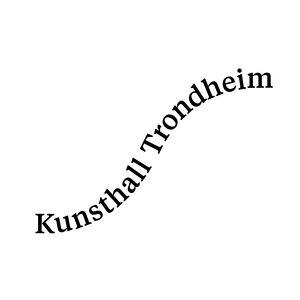May 8–August 18, 2019
Kongens gate 2
7011 Trondheim
Norway
Hours: Thursday–Friday 2–6pm,
Saturday–Sunday 12–4pm
T +47 485 00 100
office@kunsthalltrondheim.no
Thora Dolven Balke, Ann Iren Buan, Brit Dyrnes, Tibor Hajas, Éva Mag, Francesca Woodman
Kunsthall Trondheim’s summer exhibition mind moves with matter, body blends into space evolves around the body’s relation to space and materiality—also in the extended meaning of the material world. The physical body as materiality and weight, but also as an immanent strive towards movement is a reoccurring thought in the presentation. The idea of the mind as thinking matter refers to the 17th century philosopher Margaret Cavendish.
The figure in Tibor Hajas’ documented performances seems to be struggling with the room—he melts into the wall in the background while ferociously fighting to free himself. The image created in the process is reminiscent of Icarus’ wings. It’s not surprising that this mythical tale of the human wish to fly and the fall from the sky comes to mind today, in a society built on the idea of conquering our material conditions. The idea of the human is no doubt in flux. However, we still live in the material world. Today we need a political agenda based not only on increasing conflicts and threats against democratic rights, but also in the fact of the vulnerability and fragility of both the human and the earth. We need to cultivate compassion founded in our deep entanglement with everything around us. As a continuation of a series of exhibitions at Kunsthall Trondheim addressing our new reality in the Anthropocene era, this presentation puts the human body in focus.
As a result of the growing understanding of humanity’s profound ties to the material world there is today an increasing interest in the agency of matter—be it humans, other animals, plants or minerals. The interest in ecology and geology that many artists share can also be seen in the light of this, and in relation to the interest in materiality as such, in the object as such, in hand made objects or in craft based practices. Artists who work in close collaboration with natural materials, such as clay or wood, have always known that these materials are not dead. They have their own agency.
At the core of Francesca Woodman’s oeuvre is her interest in the border between body and room—a border that, in her practice, is blurred or dissolved. Her photographs can be seen as cut-outs of a world where body and space are equally alive and resonates with what the French philosopher Henri Bergson might have referred to as mobile vibrations—a continuous movement “traveling in every direction like shivers.”
Ann Iren Buan’s sculptural work approaches the same border from the other side—her sculptures simultaneously recall walls and buildings in decay and of human skin. Working with fragile materials like paper and pigments, the sculptures express both vulnerability and strength—pigments are falling from the surface, plaster and paper crumble and their tactile qualities hold connotations of the hand and traces of the sensitiveness of the body.
As in Ann Iren Buan’s sculptures, qualities of movement suspended between falling and rising, can be found also in the works of Thora Dolven Balke. The photographs presented here are enlarged scans of Polaroids with a specific floating colour tone that adds to the air of loss and memory. The ambivalence between sinking and rising gives these works a feeling of undulating movement.
Movement is also an important aspect of the bodies in Éva Mag’s large installation. If gravitation, weight and decay are obvious aspects of matter—and these heavy bodies of unburned clay are certainly matter—this obvious aspect are in these works contradicted by a tension, a confined movement, something almost rebellious, that want to rise and stand.
The violence in Tibor Hajas’ photography is echoed in Brit Dyrnes’ ceramic work. There is no division here between mind and body—forms are scattered in what could be seen as a temporary arrangement, a state of mind on the move to new constellations. More than anything, these objects express the energy and strength in the fragile human.
Curator: Helena Holmberg
Assistant Curator: Katrine Elise Pedersen (Kunsthall Trondheim)
Further public programmes in connection with the exhibition will be announced on kunsthalltrondheim.no and on Facebook.



